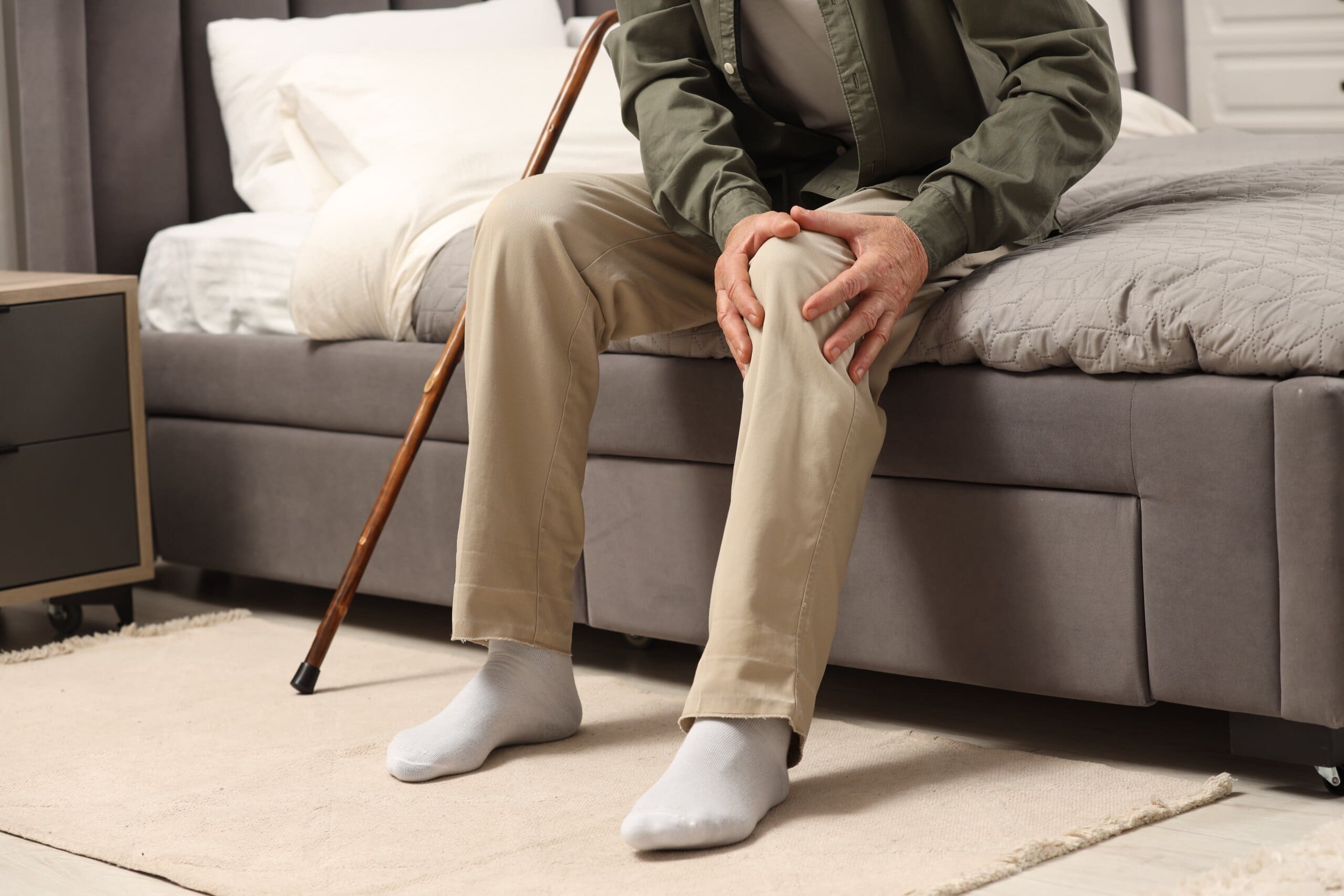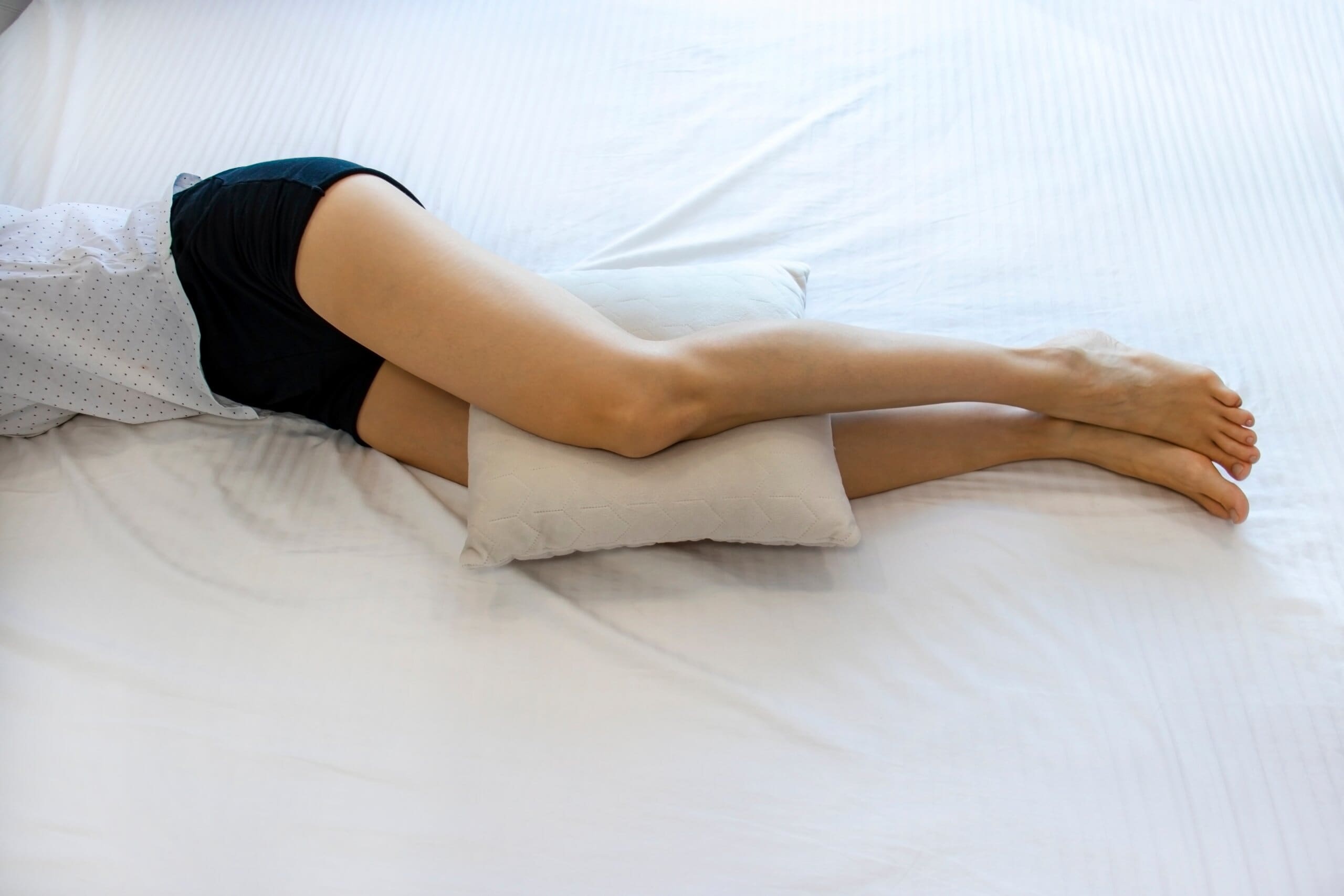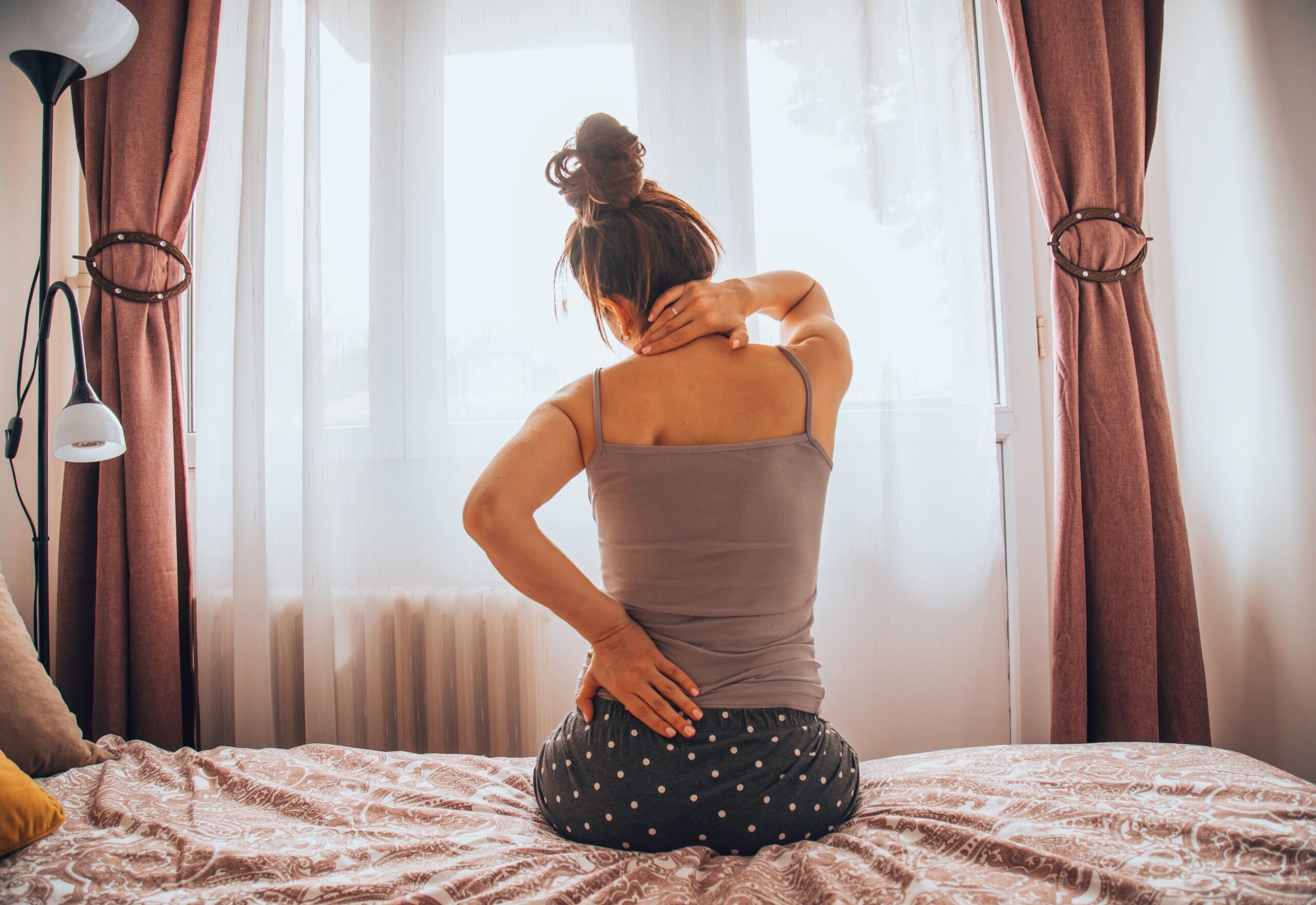Arthritis can make finding a comfortable sleeping position not just difficult, but sometimes impossible. The best sleeping position for arthritis is one that reduces the pressure on your joints and bones, but with the condition causing more pain and stiffness than the average person, it’s much more difficult to relieve this pressure effectively.
Luckily, we’ve delved into the problem, discovering the best pressure-relieving sleeping position for arthritis sufferers, especially those with pains in the knees and hips.

Why is sleeping with arthritis so uncomfortable?
Arthritis is a common condition that causes inflammation and pain in the joints. There are several different types of arthritis, such as osteoarthritis, caused by wear and tear from overuse of joints, and rheumatoid arthritis, which is caused by the body’s immune system attacking its own tissues.
Whatever the type, sleeping with arthritis can be incredibly difficult. The key to a good night’s sleep is a comfortable sleeping position that reduces pressure on the body, however arthritis makes this harder to achieve.
The best sleeping position for arthritis also depends on where your pain manifests. Osteoarthritis sufferers especially will endure inflammation and pain in specific areas, such as the neck, shoulders or knees, so it's key that these areas are cushioned the most.
How to sleep with arthritis pain in the knee
The easiest way to sleep with arthritis pain in the knee is to firstly get some more pillows on your bed. These can then be used to cushion your pain points and relieve tension and pressure for a more comfortable night’s sleep. Make sure these pillows are plump and fresh - old, flat pillows won’t do you any favours.
If you sleep on your side, place a pump pillow between your knees. Figure out which pillow height works best for you, and ensure your legs aren’t separated too much that your hips begin to hurt. A soft pillow, like a memory foam pillow, can help to relieve your pain, as it’ll mould to the unique shape of your knee for personalised support.
If you sleep on your back, place a pillow directly underneath your knees. You may need two - one under each leg. This will keep your knees gently raised, helping to reduce inflammation, as well as cushion them, relieving pressure for a more comfortable night’s sleep with arthritis.
Try not to sleep on your front when experiencing arthritis pain in the knee, as this will cause unnecessary pressure and pain on this part of your body.
How to sleep with arthritis pain in the hip
If you suffer from arthritis pain in your hip, it’s important that your mattress is the right firmness level. Your hips are likely your heaviest pressure point and, along with your shoulders, are the parts of your body that ‘dip’ into your mattress the most. Depending on how you sleep, you may find that your mattress isn’t helping to alleviate the stiffness caused by your arthritis.
If you sleep on your side, you should ensure your mattress is soft enough to allow your hip to sink in while maintaining good posture. A soft mattress or mattress topper with help to cushion your hip,
A mattress with cool gel will help you sleep with arthritic pain in the hip, as the coolness will help reduce inflammation around the painful joint.
Sleeping on your side, however, isn’t recommended if you’re struggling with arthritis pain in the hip. Try sleeping on your back instead, as this will completely alleviate any excess pressure on your pain point. On your back, you’ll want to ensure your mattress is firm enough to support your back, and doesn’t let your bottom sink too far into the mattress so that your posture is impacted.

How to sleep with arthritis pain in the neck
Sleeping more comfortably with arthritis pain in the neck is all about the pillows on your bed. Firstly, you should ensure you sleep on your back or side - sleeping on your front when experiencing neck pain will cause you to lift your head, putting undue pressure on your neck, worsening the pain.
We recommend you sleep on your back, with a flat pillow beneath your head. This is the best position to sleep in with arthritis pain in the neck, as it keeps your entire body, from your neck through to your shoulders and back, nicely aligned. Keeping your head and shoulders as aligned as possible by using a flat pillow will help to relieve tension in your neck, reducing inflammation and helping to alleviate pain.
A memory foam pillow is a major help when figuring out the best sleeping position for arthritic pain in the neck, as it will conform to your personal shape, weight and movement, offering personalised support for your needs.
How to sleep with rheumatoid arthritis
Rheumatoid arthritis attacks many joints at once, causing pain all over the body. This makes it incredibly difficult to get to sleep or find a comfortable sleeping position - in fact, 80% of people with rheumatoid arthritis report fatigue as one of their symptoms, due to lack of sleep.
The best sleeping position for rheumatoid arthritis is on your side, on an appropriately soft mattress that allows your pressure points to ‘dip’ into the surface and comfort your body parts.If you experience pain in one side of your body more than the other, ensure you sleep on the side that’s less painful.
Then, place a soft, relatively thick pillow between your knees to prevent them pushing against each other, and position a softer pillow under your elbow to support your arm, placing one where your wrist will lay as well, if needed. You should use a slightly firmer pillow beneath your head, as this will help support your neck and keep it aligned with your back, but figure out the firmness and height that makes you most comfortable.
The key to finding the best sleeping position for arthritis, especially rheumatoid arthritis, is to test where the best placement for pillows is along your body, figuring out which pressure points require the most cushioning or support.

What else can help sleeping with arthritis?
As mentioned, it’s important to ensure your mattress is the correct firmness for your sleeping position, as you really need to avoid putting excess pressure on any of your joints. If you suffer from flare ups of arthritic pain and don’t want a whole new mattress, invest in a mattress topper that you can add or remove as needed. For example, you might prefer a firmer mattress, but need a softer surface to sleep on when you’re finding it too painful to get comfortable. Then is the time to whip out a soft mattress topper.
If you want to invest in a new mattress to help your arthritis, read our guide to The Best Mattress For Arthritis, which will take you through exactly what you need to consider when choosing your mattress.









